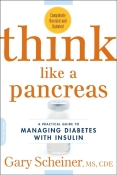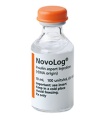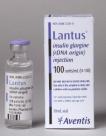I haven’t been posting much lately. Been busy, a little sick and maybe just a little too down to form words and put them out there. I have also been struggling with my glucose levels. As the seasons change I always have to adjust my insulin levels and I assumed that I would just go back to last winter’s doses, wrong. To be totally honest I am a little bit (or a lot) behind on adjusting my doses, I’ve been running generally high for around a month. I think maybe I was in a little bit of denial? Or at least avoiding the amount of work it takes to recalculate all the ratios and base lines. I know for someone who isn’t type 1 or isn’t directly involved in the care of a type 1 this seems like it shouldn’t be that difficult. Figure the dose, try it and if it doesn’t work perfectly adjust it, right? Nope. It is not only a calculated dose, it’s an equation as well as trial and error. The real problem is that the error is dangerous. The amount of time to figure all this out far exceeds the amount of work it takes though.
I adjust my insulin doses using the protocols from Think Like a Pancreas by Gary Scheiner, MS, CDE. I have said it before and I’ll say it again, this book is my bible! He explains how to calculate a base dose and how to adjust after to perfect doses. Now when you are a type 1 doing multiple daily injections (MDI) there are two types of insulin used (honestly, I know very little about using an insulin pump). Basal insulin is a “base” insulin. The purpose of this is to deal with the glucose produced by the liver. Basal insulin is a long lasting type, it is injected once or twice a day (depending on the type). I use Lantus, a once daily injection that has little to no peak, meaning that it releases into my system at a very even rate. Bolus insulin is an injection taken to cover carbohydrates in food you consume or to correct spikes in blood sugar quickly. Bolus insulin also has several different types that start working, peak and finish working at different rates. I use NovoLog insulin as a bolus, it begins working in 15-30 minutes and peaks at 60-90 minutes after injection. The trick with this type of insulin when doing MDI is timing. The idea is to time your insulin so that it peaks at the same time as the food begins to be converted to sugar keeping your glucose from spiking out of range. This is extremely difficult to do, it depends on the food, the time of year, the time of the month, stress, time of day etc.
I know it seems like these things shouldn’t matter but seriously, they do. I require a higher dose of insulin in the morning than the afternoon or evening. Before I needed to change my doses my insulin to carb ratio in the morning was 1:8 and in the afternoons 1:10 (meaning 1 unit of insulin to every 8 or 10 carbs). Now I have to recalculate these doses by keeping very detailed records (not my strong suit lately) and trying a dose and watching how much it changes my glucose after eating. The idea is that the glucose should return to pre meal numbers about 2 hours after themeal has been eaten. If it goes lower than it was, the dose is too high, if it remains higher than before eating the dose is too low. There are mathematical equations that are involved in all of this as well but I am not a doctor and I don’t want someone to think I am the best source of information, I’m not- talk to your doctor!
Basal insulin is figured out in a similar fashion, blood sugar is tested and the reading noted. The long lasting dose is given (personally we refer to this as ‘nighttime’ dose) and you go to sleep. Next step is to wake up about halfway through a night of sleep and test, noting the number. Then a fasting blood sugar is taken first thing in the morning, if the reading is more than 30 points higher than it was at bedtime then the dose too low, more than 30 points lower and the dose is too high- you follow? The reason for the mid-night testing is to be sure that there is not a crash happening in the middle of the night that then causes a rebound leaving glucose very high in the morning. Of course if sleep isn’t restful (mine hasn’t been lately) then the test is not always accurate because there are different levels of hormones released (or not) during restful sleep vs. interrupted sleep.
Oh the joys of diabetes… all I can say is as always I am extremely thankful for my Judah. I seriously can’t imagine how I would ever be withing range without him. I very rarely feel any different when my sugar is too high or too low. Often once Judah alerts and I try to take note of how I feel I’ll notice something that could be from my blood sugar but could also be the result of something else. I have a severe back problem that often gives me symptoms in my feet, legs, hips, and sometimes even my arms and hands. So, often my tingling feet are attributed to my back (injury I’ve had since I was 13) rather than my diabetes. Perfect example; this morning I was playing FarCry 3 (Marshall’s new video game, I have recently become obsessed) after eating a single piece of toast and giving a dose of insulin I began feeling strange. Judah was down stairs hanging out with my Dad (who is home sick) so I thought maybe I was low and tested. Well my glucose was 200mg/dl (pretty high but a little bit expected so soon after eating) and I honestly thought I felt low… nope. What the hell. I went downstairs immediately after to get some water and Judah met me in the kitchen with a high alert, he is so smart! 🙂





You’re a good influence. I ordered the book! (Have had it as a library book a few times—but you’re right. It’s great. We need our own copy.)
I’ve never done the official basal testing as per Scheiner, but MAN, do I want to.
Have you heard about the iPhone app that uses the algorithms pumps use, but is designed for people who use needles? It tracks all of your insulin on board, your insulin : carb ratios as they change over the day, and does the calculations for you based on est. carbs (just what a pump would do.) It sounds amazing—but maybe better for pump people who have developed pea brains from not having to do their own calculations all of the time. Anyway, this is the app—forgive me if I read about it here first!
http://www.gilport.com/rapidcalc/index.html
I hadn’t heard of that. I knew that the iPhone has it’s own meter you plug directly into your phone though! Wow… I can’t imagine what the test strips for THAT cost… I will have to check it out 🙂